
Intel Celeron N5105 Benchmark, Test and specs
Last updated:
The Intel Celeron N5105 is a 4 core processor. It can handle 4 threads simultaneously and was introduced in Q1/2021. The Intel Celeron N5105 is based on the 10. generation of the Intel Celeron series and requires a mainboard with the socket BGA 1338. The Intel Celeron N5105 scores 667 points with one CPU core in the Geekbench 5 benchmark. When using all CPU cores, the result is 2,074 points.

| Name: | Intel Celeron N5105 |
|---|---|
| Family: | Intel Celeron (165) |
| CPU group: | Intel Celeron N4000/N5000 (6) |
| Architecture: | Jasper Lake |
| Segment: | Mobile |
| Generation: | 10 |
| Predecessor: | -- |
| Successor: | -- |
CPU Cores and Base Frequency
The 4 CPU cores of the Intel Celeron N5105 clock with 2.00 GHz (2.90 GHz). The number of CPU cores and the clock frequency of the processor are largely responsible for the overall performance.
| CPU Cores / Threads: | 4 / 4 |
|---|---|
| Core architecture: | normal |
| Cores: | 4x Tremont |
| Hyperthreading / SMT: | No |
|---|---|
| Overclocking: | No |
| Frequency: | 2.00 GHz |
| Turbo Frequency (1 Core): | 2.90 GHz |
| Turbo Frequency (4 Cores): | 2.60 GHz |
Internal Graphics
With the Intel UHD Graphics 24 EUs (Jasper Lake), the Intel Celeron N5105 has an build in graphic solution. It has 24 SM processors, which have a total of 192 texture shaders. The iGPU not only enables games, but also significantly accelerates video playback.
| GPU name: | Intel UHD Graphics 24 EUs (Jasper Lake) |
|---|---|
| GPU frequency: | 0.45 GHz |
| GPU (Turbo): | 0.90 GHz |
| Compute units: | 24 |
| Shader: | 192 |
| Hardware Raytracing: | No |
| Release date: | Q1/2021 |
| Max. displays: | 3 |
|---|---|
| Generation: | 11 |
| Direct X: | 12 |
| Technology: | 10 nm |
| Max. GPU Memory: | 8 GB |
| Frame Generation: | No |
Hardware codec support
Processors that have an integrated graphics can play videos faster and more efficiently. This can have a positive effect on the battery life of notebooks, for example.
| h265 / HEVC (8 bit): | Decode / Encode |
|---|---|
| h265 / HEVC (10 bit): | Decode / Encode |
| h264: | Decode / Encode |
| VP8: | Decode / Encode |
| VP9: | Decode / Encode |
| AV1: | No |
|---|---|
| AVC: | Decode / Encode |
| VC-1: | Decode |
| JPEG: | Decode / Encode |
Memory & PCIeThe Intel Celeron N5105 supports up to 16 GB memory in up to 2 (Dual Channel) memory channels. This results in a maximum memory bandwidth of 46.9 GB/s. |
|
| Memory type: | Memory bandwidth: |
|---|---|
| DDR4-2933 | 46.9 GB/s |
| Max. Memory: | 16 GB |
| Memory channels: | 2 (Dual Channel) |
| ECC: | No |
| PCIe: | 3.0 x 8 |
| PCIe Bandwidth: | 7.9 GB/s |
Thermal ManagementWith the TDP, the processor manufacturer specifies the cooling solution required for the processor. The Intel Celeron N5105 has a TDP of 10 W. |
|
|---|---|
| TDP (PL1 / PBP): | 10 W |
| TDP (PL2): | 20 W |
| TDP up: | -- |
| TDP down: | -- |
| Tjunction max.: | 105 °C |
Technical details
The Intel Celeron N5105 has a 5.50 MB large cache. The processor is manufactured in 10 nm. Modern production increases the efficiency of the processor.
| Technology: | 10 nm |
|---|---|
| Chip design: | Monolithic |
| Socket: | BGA 1338 |
| L2-Cache: | 1.50 MB |
| L3-Cache: | 4.00 MB |
| AES-NI: | Yes |
| Operating systems: | Windows 10, Windows 11, Linux |
| Virtualization: | VT-x, VT-x EPT, VT-d |
|---|---|
| Instruction set (ISA): | x86-64 (64 bit) |
| ISA extensions: | SSE4.1, SSE4.2 |
| Release date: | Q1/2021 |
| Release price: | -- |
| Part Number: | -- |
| Documents: | Technical data sheet |
Rate this processor
Benchmark results

The benchmark results for the Intel Celeron N5105 have been carefully checked by us. We only publish benchmark results that have been created by us or that have been submitted by a visitor and then checked by a team member. All results are based on and fullfill our benchmark guidelines.
Screenshots:
Screenshots:
Cinebench R23 (Single-Core)
Cinebench R23 is the successor of Cinebench R20 and is also based on the Cinema 4 Suite. Cinema 4 is a worldwide used software to create 3D forms. The single-core test only uses one CPU core, the amount of cores or hyperthreading ability doesn't count.

|
Intel Core m3-7Y32
2C 4T @ 3.00 GHz |
||

|
Intel Core i7-2720QM
4C 8T @ 3.30 GHz |
||

|
Intel Core i7-3520M
2C 4T @ 3.60 GHz |
||
|
|
Intel Celeron N5105
4C 4T @ 2.90 GHz |
||

|
Intel Celeron N5095A
4C 4T @ 2.90 GHz |
||

|
Intel Celeron N5095
4C 4T @ 2.90 GHz |
||

|
Intel Celeron N4505
2C 2T @ 2.90 GHz |
||
Cinebench R23 (Multi-Core)
Cinebench R23 is the successor of Cinebench R20 and is also based on the Cinema 4 Suite. Cinema 4 is a worldwide used software to create 3D forms. The multi-core test involves all CPU cores and taks a big advantage of hyperthreading.

|
Intel Core i7-2720QM
4C 8T @ 2.20 GHz |
||
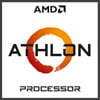
|
AMD Athlon Gold 3150C
2C 4T @ 2.40 GHz |
||

|
AMD Athlon Gold 3150U
2C 4T @ 2.40 GHz |
||
|
|
Intel Celeron N5105
4C 4T @ 2.60 GHz |
||

|
Intel Core i5-2400
4C 4T @ 3.10 GHz |
||

|
Intel Celeron G3900
2C 2T @ 2.80 GHz |
||
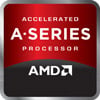
|
AMD A12-9800
4C 4T @ 3.80 GHz |
||
Geekbench 5, 64bit (Single-Core)
Geekbench 5 is a cross plattform benchmark that heavily uses the systems memory. A fast memory will push the result a lot. The single-core test only uses one CPU core, the amount of cores or hyperthreading ability doesn't count.

|
Intel Core i3-2120
2C 4T @ 3.30 GHz |
||

|
Intel Core i3-2125
2C 4T @ 3.30 GHz |
||

|
Intel Core i7-2720QM
4C 8T @ 3.30 GHz |
||
|
|
Intel Celeron N5105
4C 4T @ 2.90 GHz |
||

|
Intel Celeron N5095A
4C 4T @ 2.90 GHz |
||

|
Intel Core M-5Y70
2C 4T @ 2.60 GHz |
||

|
Intel Core i5-2310
4C 4T @ 3.20 GHz |
||
Geekbench 5, 64bit (Multi-Core)
Geekbench 5 is a cross plattform benchmark that heavily uses the systems memory. A fast memory will push the result a lot. The multi-core test involves all CPU cores and taks a big advantage of hyperthreading.

|
Intel Core i3-8145U
2C 4T @ 2.80 GHz |
||
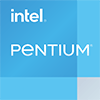
|
Intel Pentium Gold G5400
2C 4T @ 3.70 GHz |
||

|
Intel Core i3-7100
2C 4T @ 3.90 GHz |
||
|
|
Intel Celeron N5105
4C 4T @ 2.60 GHz |
||

|
Intel Core i3-4370
2C 4T @ 3.80 GHz |
||

|
Intel Core i5-7267U
2C 4T @ 3.50 GHz |
||

|
Intel Core i3-6100
2C 4T @ 3.70 GHz |
||
Geekbench 6 (Single-Core)
Geekbench 6 is a benchmark for modern computers, notebooks and smartphones. What is new is an optimized utilization of newer CPU architectures, e.g. based on the big.LITTLE concept and combining CPU cores of different sizes. The single-core benchmark only evaluates the performance of the fastest CPU core, the number of CPU cores in a processor is irrelevant here.

|
Intel Celeron G1820
2C 2T @ 2.70 GHz |
||

|
Intel Pentium G2020
2C 2T @ 2.90 GHz |
||

|
Intel Core i7-2630QM
4C 8T @ 2.90 GHz |
||
|
|
Intel Celeron N5105
4C 4T @ 2.90 GHz |
||

|
Intel Celeron N5095A
4C 4T @ 2.90 GHz |
||

|
Intel Celeron N5095
4C 4T @ 2.90 GHz |
||

|
Qualcomm Snapdragon 685 4G
8C 8T @ 2.80 GHz |
||
Geekbench 6 (Multi-Core)
Geekbench 6 is a benchmark for modern computers, notebooks and smartphones. What is new is an optimized utilization of newer CPU architectures, e.g. based on the big.LITTLE concept and combining CPU cores of different sizes. The multi-core benchmark evaluates the performance of all of the processor's CPU cores. Virtual thread improvements such as AMD SMT or Intel's Hyper-Threading have a positive impact on the benchmark result.

|
Intel Core i5-4210U
2C 4T @ 2.35 GHz |
||

|
AMD Athlon Silver 3050e
2C 4T @ 1.80 GHz |
||

|
Intel Core i7-860
4C 8T @ 2.80 GHz |
||
|
|
Intel Celeron N5105
4C 4T @ 2.60 GHz |
||

|
Qualcomm Snapdragon 678
8C 8T @ 2.20 GHz |
||

|
Qualcomm Snapdragon 835
8C 8T @ 2.45 GHz |
||
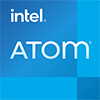
|
Intel Atom C5315
4C 4T @ 2.40 GHz |
||
Cinebench R20 (Single-Core)
Cinebench R20 is the successor of Cinebench R15 and is also based on the Cinema 4 Suite. Cinema 4 is a worldwide used software to create 3D forms. The single-core test only uses one CPU core, the amount of cores or hyperthreading ability doesn't count.

|
Intel Pentium G4560
2C 4T @ 3.50 GHz |
||
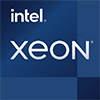
|
Intel Xeon E5-2620 v4
8C 16T @ 3.00 GHz |
||

|
Intel Xeon E5-2697 v4
18C 36T @ 3.60 GHz |
||
|
|
Intel Celeron N5105
4C 4T @ 2.90 GHz |
||

|
AMD A12-9800
4C 4T @ 4.20 GHz |
||

|
Intel Core i3-3220
2C 4T @ 3.30 GHz |
||

|
Intel Core i5-2400
4C 4T @ 3.40 GHz |
||
Cinebench R20 (Multi-Core)
Cinebench R20 is the successor of Cinebench R15 and is also based on the Cinema 4 Suite. Cinema 4 is a worldwide used software to create 3D forms. The multi-core test involves all CPU cores and taks a big advantage of hyperthreading.

|
AMD FX-6200
6C 6T @ 4.10 GHz |
||

|
AMD Athlon Gold 3150U
2C 4T @ 2.40 GHz |
||

|
Intel Pentium G4560
2C 4T @ 3.50 GHz |
||
|
|
Intel Celeron N5105
4C 4T @ 2.60 GHz |
||

|
AMD Athlon PRO 300GE
2C 4T @ 3.40 GHz |
||

|
AMD Athlon 220GE
2C 4T @ 3.40 GHz |
||

|
Intel Core i5-7300U
2C 4T @ 3.50 GHz |
||
iGPU - FP32 Performance (Single-precision GFLOPS)
The theoretical computing performance of the internal graphics unit of the processor with simple accuracy (32 bit) in GFLOPS. GFLOPS indicates how many billion floating point operations the iGPU can perform per second.

|
Intel Core i7-5600U
Intel HD Graphics 5500 @ 0.95 GHz |
||

|
Intel Celeron 5205U
Intel UHD Graphics (Comet Lake) @ 0.90 GHz |
||

|
Intel Celeron 5305U
Intel UHD Graphics (Comet Lake) @ 0.90 GHz |
||
|
|
Intel Celeron N5105
Intel UHD Graphics 24 EUs (Jasper Lake) @ 0.90 GHz |
||

|
Qualcomm Snapdragon 670
Qualcomm Adreno 615 @ 0.70 GHz |
||

|
Qualcomm Snapdragon 7c Gen 2
Qualcomm Adreno 618 @ 0.70 GHz |
||

|
Intel Core i5-11260H
Intel UHD Graphics 11th Gen (16 EU) @ 1.40 GHz |
||
Estimated results for PassMark CPU Mark
Some of the CPUs listed below have been benchmarked by CPU-monkey. However the majority of CPUs have not been tested and the results have been estimated by a CPU-monkey’s secret proprietary formula. As such they do not accurately reflect the actual Passmark CPU mark values and are not endorsed by PassMark Software Pty Ltd.

|
AMD Athlon 200GE
2C 4T @ 3.20 GHz |
||

|
Intel Core i5-3330
4C 4T @ 3.00 GHz |
||

|
Intel Core i7-2720QM
4C 8T @ 2.20 GHz |
||
|
|
Intel Celeron N5105
4C 4T @ 2.60 GHz |
||

|
AMD Athlon PRO 300U
2C 4T @ 2.40 GHz |
||

|
Intel Core i3-8145UE
2C 4T @ 2.20 GHz |
||

|
Intel Celeron N5095
4C 4T @ 2.50 GHz |
||
Benchmarks
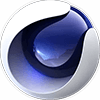
Cinebench R23 (SC)
586 entries
586 entries

Cinebench R23 (MC)
565 entries
565 entries

Geekbench 5 (SC)
2,488 entries
2,488 entries

Geekbench 5 (MC)
2,461 entries
2,461 entries
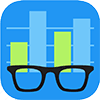
Geekbench 6 (SC)
1,755 entries
1,755 entries

Geekbench 6 (MC)
1,703 entries
1,703 entries

Cinebench R20 (SC)
656 entries
656 entries

Cinebench R20 (MC)
604 entries
604 entries

FP32 SP (iGPU)
2,042 entries
2,042 entries

3DMark Timespy (iGPU)
516 entries
516 entries

PassMark CPU-Mark
2,392 entries
2,392 entries
Description of the processor
The Intel Celeron N5105 is a tenth generation processor from Intels Celeron series. It was released in the first quarter of 2021 and is aimed at the mobile device market.The Intel Celeron N5105 is based on a standard core architecture in which 4 cores (codename Tremont) are used, which have a standard clock speed of 2.00 gigahertz. In turbo mode, the clock increases to up to 2.90 gigahertz when one core is loaded and if all cores are loaded together, the turbo clock is still 2.60 gigahertz. The processor cannot be overclocked due to the lack of a free multiplier, and the Intel Celeron N5105 also does not support hyperthreading.
Like all mobile processors, the Intel Celeron N5105 also has an internal graphics unit. In this case, the Intel UHD Graphics with 24 execution units of the "Jasper Lake" architecture is used. In addition to the 24 execution units, this graphics unit has 192 shader units and the clock frequency is 0.45 gigahertz. However, the iGPU has a turbo mode with which the clock frequency can be increased up to 0.80 gigahertz. The Intel UHD Graphics, which comes from the eleventh generation of Intels internal graphics units, is manufactured using the 10-nanometer process and was installed for the first time at the same time as the processor, in the first quarter of 2021.
With the Intel Celeron N5105, up to 16 gigabytes of DDR4-2933 RAM can be operated. The maximum bandwidth of the main memory is 45.8 GB/s and the dual-channel mode can be used thanks to the 2 available memory channels, which is noticeable in the increased graphics performance. The Intel Celeron N5105 does not support memory with automatic error correction.
The processor has 8 type 3.0 PCIe lanes for connecting various expansion cards.
Popular comparisons
back to index






